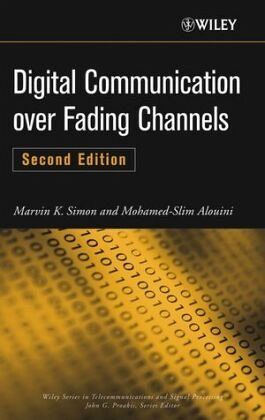
Digital Communication Over Fading Channels

PAYBACK Punkte
135 °P sammeln!
Eine prägnante, ausgezeichnet organisierte Zusammenfassung des gegenwärtigen Forschungsstandes auf einem wichtigen Gebiet der Telekommunikation! Nahezu sämtliche Leistungsmerkmale und Kenngrößen grundlegender digitaler Kommunikationssysteme werden vereinheitlicht und übersichtlich dargestellt.
The four short years since Digital Communication over Fading Channels became an instant classic have seen a virtual explosion of significant new work on the subject, both by the authors and by numerous researchers around the world. Foremost among these is a great deal of progress in the area of transmit diversity and space-time coding and the associated multiple input-multiple output (MIMO) channel. This new edition gathers these and other results, previously scattered throughout numerous publications, into a single convenient and informative volume.
Like its predecessor, this Second Edition discusses in detail coherent and noncoherent communication systems as well as a large variety of fading channel models typical of communication links found in the real world. Coverage includes single- and multichannel reception and, in the case of the latter, a large variety of diversity types. The moment generating function (MGF)-based approach for performance analysis, introduced by the authors in the first edition and referred to in literally hundreds of publications, still represents the backbone of the book's presentation. Important features of this new edition include:
_ An all-new, comprehensive chapter on transmit diversity, space-time coding, and the MIMO channel, focusing on performance evaluation
_ Coverage of new and improved diversity schemes
_ Performance analyses of previously known schemes in new and different fading scenarios
_ A new chapter on the outage probability of cellular mobile radio systems
_ A new chapter on the capacity of fading channels
_ And much more
Digital Communication over Fading Channels, Second Edition is an indispensable resource for graduate students, researchers investigating these systems, and practicing engineers responsible for evaluating their performance.
Like its predecessor, this Second Edition discusses in detail coherent and noncoherent communication systems as well as a large variety of fading channel models typical of communication links found in the real world. Coverage includes single- and multichannel reception and, in the case of the latter, a large variety of diversity types. The moment generating function (MGF)-based approach for performance analysis, introduced by the authors in the first edition and referred to in literally hundreds of publications, still represents the backbone of the book's presentation. Important features of this new edition include:
_ An all-new, comprehensive chapter on transmit diversity, space-time coding, and the MIMO channel, focusing on performance evaluation
_ Coverage of new and improved diversity schemes
_ Performance analyses of previously known schemes in new and different fading scenarios
_ A new chapter on the outage probability of cellular mobile radio systems
_ A new chapter on the capacity of fading channels
_ And much more
Digital Communication over Fading Channels, Second Edition is an indispensable resource for graduate students, researchers investigating these systems, and practicing engineers responsible for evaluating their performance.


